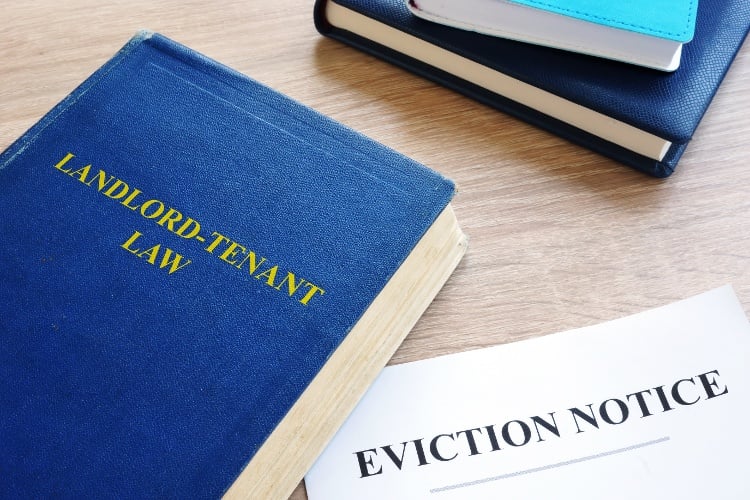Even when you thoroughly screen tenants and inspect your rental on a regular basis, you may still end up with a tenant who destroys property. Sometimes it seems that everyone talks about tenant’s rights. But the fact is that landlords have rights too.
In this article, we’ll explain what rights a landlord has when a tenant destroys property, the steps to take to document tenant damage, and how to get a tenant to pay for damages.
Know Your Rights as a Landlord
Although landlord-tenant laws vary from state to state, generally speaking, a tenant is responsible for any damages beyond normal wear and tear. For example, items such as flooring, appliances, and paint normally wear out over time and aren’t due to tenant neglect.
However, things like an air conditioning compressor burning out because the tenant keeps the temperature in the house near freezing, plumbing lines clogging because of debris flushed down the toilet, smashed glass or a dented garage door are caused by tenant neglect or negligence.
Of course, some tenants will try to blame the damage on someone or something else, but the fact of the matter is they’re financially responsible for destroying your rental property.
While assigning the blame is one thing, enforcing your rights as a landlord when a tenant destroys property and collecting on the damages can be something completely different.

5 Steps to Take When Tenant Destroys Property (IDETD)
After you’ve been in the rental property business long enough, sooner or later you’ll run into a tenant who’s mad about something and decides to take it out on you and your property. Maybe they lost a job, have a personal problem, or don’t want to pay a rent increase when their lease comes up for renewal.
With luck, this may never happen to you. But when and if a renter destroys your property, here are the 5 steps (known as the IDETD System) to take to protect your property and your rights as a landlord:
Step #1: Identify
Identify the overall situation and the damage to make sure that it’s the tenant who is destroying your property.
Although it may be difficult to do when you’re looking at a hefty repair bill for damages, be sure to keep your emotions in check. One good way to identify the situation is to ask yourself if there have been past issues with the tenant that might indicate they’re really the ones who caused the damage.
Step #2: Document
We all know that a picture is worth a thousand words, especially when it comes to documenting damage to your property caused by the tenant. Having photographic evidence makes it easier to charge the tenant for repairs and may help the judge rule in your favor if you need to take the tenant to small claims court.
In addition to taking still photos, it’s a good idea to record a video tour as you walk through each room in your house along with detailed commentary that describes any damage as objectively as possible.
When the tenant moved in you conducted a walk-through tour, so the pictures you’re taking now provide the perfect before and after comparison.
Step #3: Estimate
The cost of repairing damage caused by the tenant can add up surprisingly fast, especially if the work needs to be done by a licensed contractor and not a handyman.
Your local property manager has a reliable network of vendors that can make repairs quickly and at a fair price, with any volume discount they receive on time and materials passed through to your project.
If you’re trying to deal with repair people on your own, be sure to get several estimates to make sure you’re getting a good quote. You want to get your property back on the market to rent as fast as possible. Just make sure that the vendor isn’t trying to cut corners to low-ball the competition with below-grade repair work.
Step #4: Talk
At this point, you’ve identified the cause of the damage, documented the work that needs to be done with photos and videos, and received fair estimates on the cost of repairs. Now it’s time to talk to the tenant to discuss the seriousness of the situation and your plans to remedy it.
Being fair and reasonable with your tenant is a good way to do business, and will also help if you have to go to court. Sometimes a landlord will agree to split the difference with the tenant if the damaged item was going to be replaced anyway.
For example, if you are planning on replacing outdated mirrored closet doors on your next tenant turn, it may not be reasonable to fully charge the tenant for glass that was broken due to an honest accident.
Step #5: Deduct
When the tenant moved in, you collected a security deposit. One of the reasons for the deposit is to make sure you have the funds available to cover damage caused by the tenant beyond normal wear and tear.
You may choose to withhold all or part of the tenant’s security deposit. If you do this, provide the tenant with an itemized list of damages, the cost to repair, and documentation of the damages (such as copies of the pictures you took) to let the tenant know you’re playing fair and square.
Avoid the temptation to mark up the cost of repairs. The tenant security deposit isn’t meant to be a mini profit center, and you may run into problems if you end up in small claims court with the tenant.
Three “What-If” Scenarios
Now let’s take a look at three common scenarios landlords run face when a tenant destroys property, and how to handle each one.
1. If the tenant is still in the property- Document the damages thoroughly, including pictures, documents, and repair quotes.
- Discuss the damages with the tenant, negotiate when appropriate, and put the agreement in writing.
- Deduct from the security deposit reasonable costs for damage caused by the tenant.
- Consider taking the tenant to small claims court to receive a judgment against the tenant if the cost of repairs exceeds the security deposit amount.
- Sometimes tenants will become adversarial, forcing you to do something you’d rather not.
- If in your best judgment the tenant poses a threat to you, your property, or the neighbors, consider giving the tenant a three-day notice to vacate and be prepared to evict.
- File a police report if the tenant becomes hostile or aggressive to let the tenant know you’re serious about protecting your rights as a landlord.
- Cash for keys is a good way to cut your losses by paying the tenant to leave, and a good way to avoid the cost of evicting the tenant and going to court.
- When the cost of repairing damage caused by the tenant is more than the security deposit, you can always take legal action by going to small claims court, obtaining a judgment, and turning the matter over to a debt collector.
- Filing an insurance claim is another way to recover your losses from tenant damage, but remember that too many insurance claims for minor items will eventually increase your annual premium.

Can You Take Legal Action If a Tenant Destroys Property?
Landlords can take legal action if a tenant destroys their property. Before you take this step, make sure to document the tenant damage, review your rental agreement with the tenant, and understand your local landlord-tenant laws.
Contact the police
It’s a good idea to contact the police to report certain damage caused by the tenant. In situations where the tenant stole items such as appliances or the water heater, the police may be able to pursue criminal charges. You’ll also need a police report if you plan on filing an insurance claim or suing the tenant for damages.
File an insurance claim
Speak with your insurance agent to understand the impact of filing an insurance claim for damages caused by the tenant. Even if your policy will reimburse you for damages, ask your agent if making a claim will end up increasing your annual premium and by how much.
Then do a cost-benefit analysis to see if filing a claim makes good business sense. Insurance companies also look for a pattern of claims, and will reserve the right to cancel a policy or not renew it for rental properties owners who have a history of making claims.
Sue the tenant for damages
Another legal action you can take is to sue the tenant in small claims court. You may be able to obtain a judgment against the tenant to compensate you for the cost of repairs. After that, you’ll need to record and enforce the judgment by turning the matter over to an attorney or collections agency.
As with an insurance claim, analyze the pros and cons of suing the tenant for damages. If the tenant has no money to their name or files for bankruptcy you may be unable to collect even if the court rules in your favor.
Final Thoughts
As a landlord, you have specific rights when a tenant destroys property either on purpose or accidentally. Make sure to document the damage, itemize the cost of repairs, and talk to the tenant so that they understand how serious the situation is.
Preventing potential damages beings when the tenant moves in. Always conduct a walk-through, explain what normal wear and tear means, and the tenant’s responsibility for paying for damage caused by neglect or intentional destruction.









